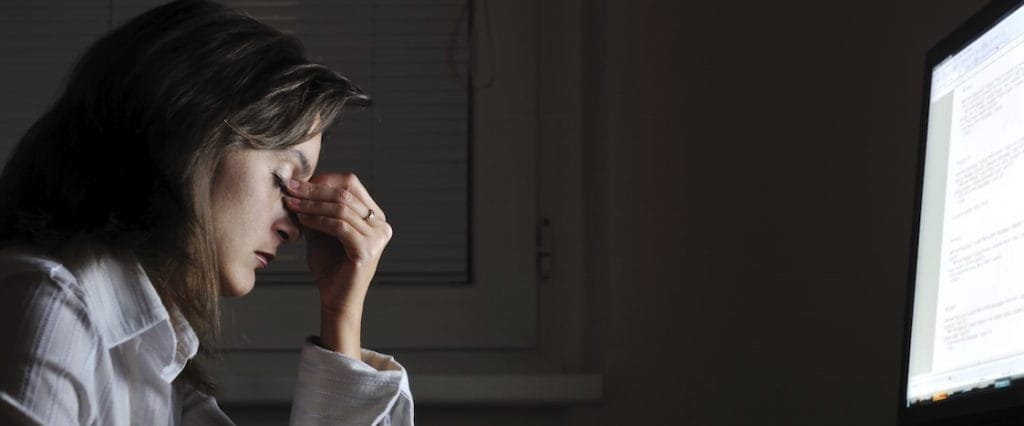Many psychologists believe journalists exposed to graphic and violent news footage could be at risk for post-traumatic stress disorder (PTSD), depression, anxiety and other mental health disorders. In response to this emerging threat, some newsrooms are taking action to protect their employees. But the risk is largely based on recent developments in the industry, most especially the arrival of user-generated content (homemade videos) that is changing the way news organizations gather and report information. Consequently, many journalists are still being subjected to excessive amounts of gore, bloodshed and depredation in video format, despite the apparent dangers such exposure represents. War correspondents and crime reporters have a front-line view of human depravity and viciousness, and the psychological trauma they undergo as a result is known about and expected. But with the proliferation of video surveillance cameras, smartphones with recording capabilities and media savvy terrorist organizations that use graphic imagery to create shock and awe, these days news professionals who never go near a war zone or crime scene are still immersed in an ever-flowing collage of beatings, burnings, decapitations, torture sessions and bloody murders. Violence that had been confined to far-off places has now come home to our computer monitors and television screens, and journalists charged with vetting this material are exposed to more of it than most.
Media Violence and PTSD in the Spotlight
In August 2014, the Journal of the Royal Society of Medicine published a report on journalistic trauma caused by repeated exposure to graphic imagery. Led by Dr. Anthony Feinstein, a psychiatrist employed by the Sunnybrook Health Sciences Center in Toronto, a team of researchers surveyed 116 international journalists who regularly watched, verified and recommended user-generated video content for use in news broadcasts. These disturbing videos came from war zones, natural disaster locations, crime scenes and accident sites, and these men and women were poring over dozens of such presentations on a daily basis. To no one’s surprise, the researchers found a clear link between exposure to horrific video imagery and increased incidence of depression, anxiety disorder and PTSD. Many of the journalists chosen to sift through this material were inexperienced and ill-prepared to deal with the impact viewing it would have on their psyches. But even veteran reporters aren’t trained to handle the emotions stirred up by conclusive proof of man’s inhumanity to man, and no one who is assigned to screen recorded violence is likely to escape unscathed from its debilitating clutches.
What’s the Story at Storyful?
Traditional codes of conduct in journalism have probably prevented some from admitting how they’ve been affected by exposure to shocking videos. Thankfully, however, things appear to be changing. Discussion about the topic among journalists has become more common, and awareness of the risk of PTSD has become more widespread. Meanwhile, news-gathering organizations have begun to introduce policies designed to protect their reporters from the jarring psychological impact of vivid, streaming violence. One leader in this area is the news and information agency Storyful. Inside the Storyful offices, a team of journalists scrutinizes user-generated content around the clock, searching for gems to pass along to news organizations on the lookout for breaking stories and up-to-date information on the hottest topics. A good portion of the material vetted by Storyful personnel is graphically violent, and much of it will ultimately be rejected as too gruesome for prime time. But the men and women responsible for carrying out this grim work are not simply abandoned to their fates. To preserve their sanity, journalists are regularly rotated in and out of active video review assignments, and any material even suspected of containing graphic images is automatically assigned to senior staffers. Repeated viewings of the worst videos are prohibited, and managers at Storyful receive special mental health training to help them detect any psychological problems the members of the review team might be suffering. Internal meetings always include frank and honest discussions about this topic, and anyone feeling stressed or depressed after watching disturbing material is encouraged to speak up. In instituting these procedures, the management at Storyful has been following guidelines established by Columbia University’s Dart Center for Journalism and Trauma. Analyzing all aspects of violent media content, Dart Center researchers have concluded that PTSD in journalists is an underreported phenomenon and a significant health issue that all newsrooms and news-gathering organizations have a duty to address. At this stage, no one knows how badly journalists are being affected by constant exposure to horrifying video imagery. In the modern age, terrorist atrocities, wartime depredations, senseless street attacks on innocents and heart-breaking deaths following natural disasters are all routinely presented on graphic home videos, and it is nearly impossible for anyone working in journalism to avoid regular contact with sensationalistic user-generated content. More study will be needed to determine just how great the risks of psychological damage are for working professionals in the news industry. But journalists exhibiting any signs of emotional trauma related to their jobs should strongly consider seeking professional help before the situation spirals out of control.

